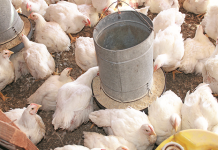My warmest congratulations to last year’s matriculants on improving the national pass rate from 70,2% in 2011 to 73,9%. All provinces managed to up their pass rate except for the Western Cape, which dropped marginally. And this province helped to make up for it by producing, as before, the highest number of students with a university exemption.
But while these improvements need to be celebrated, a dose of reality is needed. For example, while the numbers of those who passed matric mathematics went up from about 46% in 2011 to 54% last year, fewer pupils are writing maths. From 2009 to 2012, the number writing the subject decreased from about 290 000 to about 225 000.
Similarly, while the pass rate for physical science increased from 53% in 2011 to 61% last year, the number of pupils who wrote physical science has halved in three years – from over 220 000 in 2009 to just under 110 000 last year. In addition, while approximately 600 000 pupils wrote matric last year, the original size of this group in Grade 1 in 2001 was over one million.
This means that about 400 000 pupils dropped out of school. Last year, a high school and a secondary school in my village – each of which had catered for over 500 pupils before 2000 – were shut down and merged with another high school; some of the classes had dropped to fewer than 10 pupils.
Another worry is the fact that only 26,6% of those who wrote qualified to study towards a university degree, while about 27,3% qualified to get a diploma. And even if they do get university exemption, how many of these students would actually make it into university? According to the National Planning Commission Diagnostic, fewer than 4% of those who pass matric actually have the opportunity to get a university education.
Alternatives to academic study
I agree with Paul Joubert, an economist at the Solidarity Research Institute, that it is high time greater emphasis is placed on improving other tertiary training institutions such as the FET colleges. There are a number of these in the country, but it is obvious that we need more, especially in rural areas. Another concern of mine is that in all the existing FET colleges, very few offer agricultural courses. We have a only a handful of agricultural colleges scattered across South Africa.
While I was home in Jericho, North West, this holiday, one youngster asked me whether I could refer him to a nearby FET college, as he was interested in doing an agricultural course but could not afford to stay too far from home. Although there are three FET colleges fairly close by, not one of them offers agricultural courses. It’s time to stop this endless talk about the need for alternatives to university education, and do something concrete about it. And what better sector to concentrate on than agriculture? Could there be anything more important than putting food on the nation’s table?
One thing is for certain: our education system is far from fixed and we simply cannot carry on hiding behind carefully massaged statistics, excuses and procrastination.












